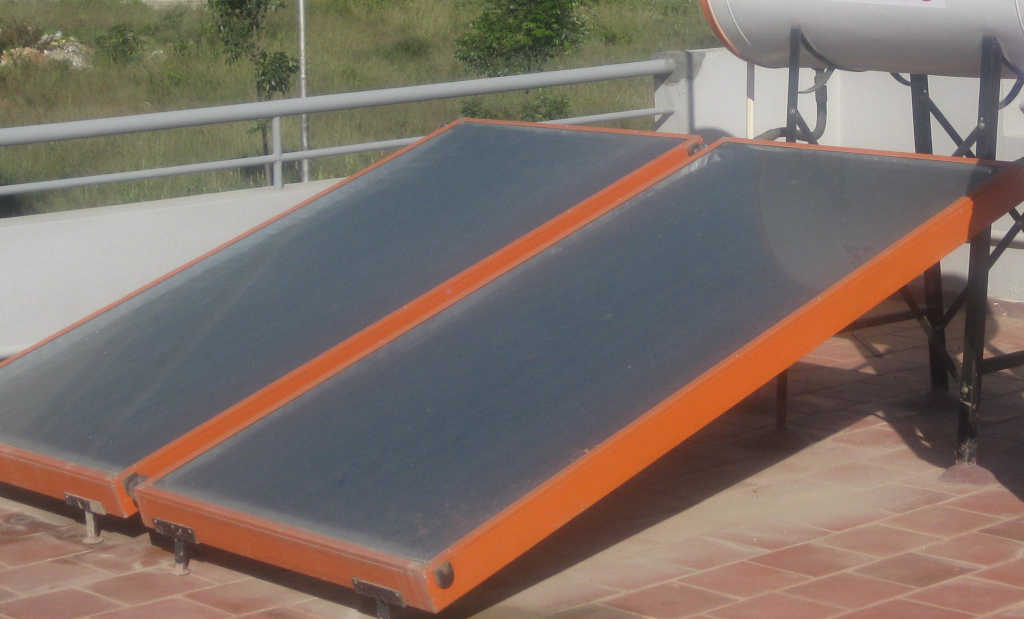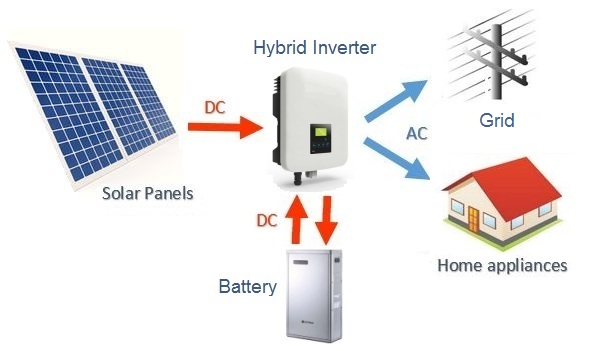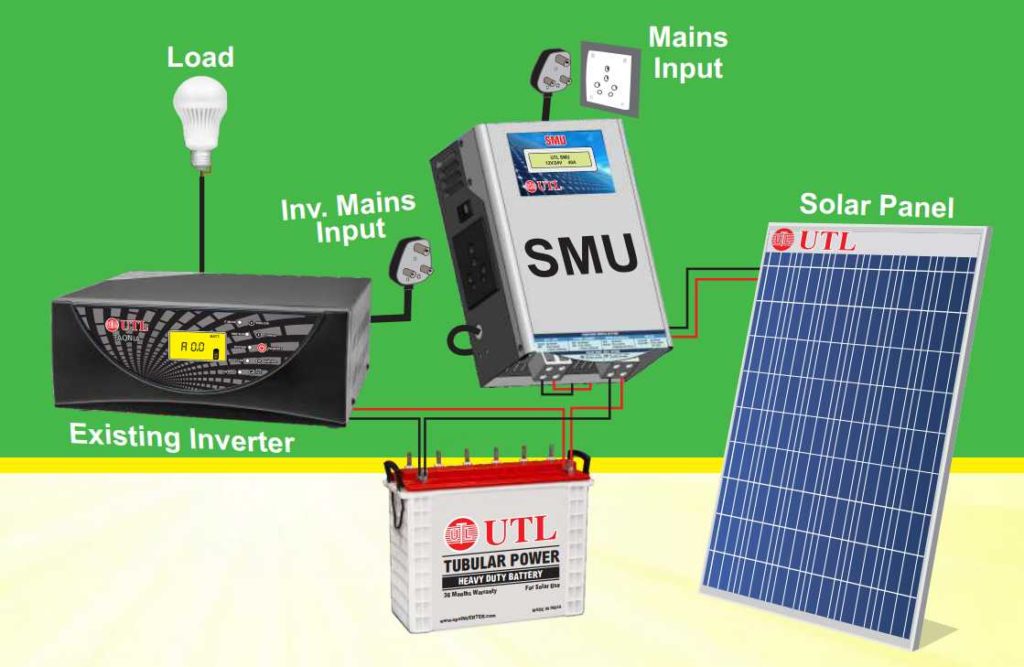Solar Panel Project - Do It Yourself
I was finally ready to install solar panels. After having made all the calculations, I arrived at the fact that I could get the return on investment in 5 years. But I had an even better idea. I decided do build it myself. What better way to learn about solar power except by doing it yourself! I always prefer to do things myself rather than letting some one else do the job for me. My work will be subpar at best, but it not only gives me a great opportunity to learn something new, but is also a lot of fun.
If you remember from my last post, I was planning on building a 1 KW farm. But since I was planning to do it myself, I decided to start small and then add more as required. I had to design it in such way that it should be extensible without adding too much cost in future.
Site location
First I needed to find a place to install the solar panels. I was planning on installing three 335 W panels for a total of 1 KW power generation at peak. We already have solar water heater panels on our terrace. Remember that these panels are not the type that generate electricity. They just heat up due to sunlight and then exchange the heat with water.

However, the copper in the panels corroded and they are not functioning properly. The solar water heater was not effective during the colder seasons of Bangalore when we need them the most. And it is cold here for the most part of the year. When we called the repair personnel they said the panels have to be taken to the factory to be repaired. They came and took the panels. Later they called us and said the corrosion was beyond repair and we had to replace them. The cost they quoted was Rs. 16,000 for both the panels after exchanging with old ones.
Why would I spend so much for a set of panels that don't even work properly? I told them to keep the old panels themselves for free :). Anyway, I decided to use the space that was thus cleared for my solar panels.
Site preparation
As you already know, half the terrace is currently being used by our organic terrace garden. The way we planned the organic garden was quite strategic. We used the side of the terrace that was towards the front of the house for the garden. The terrace that was towards the back is where I wanted to setup solar panels.
The reason was that the UPS and batteries are stationed at the back of the house on the ground floor. So wiring the panels from the back of the terrace to the ground will be easier. Remember that the longer the wires, the more voltage drop you will notice. So you always want solar panels to be as close to the batteries as possible to avoid losses due to resistance in the wires.
My Setup
Before I explain the plan, you should know my setup. We have a Su-kam pure sine wave UPS which is rated for 1400 VA. At 1400 VA, it can take a signification amount of load but not too much. My house is wired in such a way that all the 5 amp appliances and sockets come together and connect to the UPS. So I can practically run everything in the house that is connected to 5 amps. This includes, all the lights and fans in every room, TV, music system, media center PC, laptops, phone chargers, home automation equipment, HOB, chimney fan etc. My UPS is connected to two tubular batteries.

What does not run on UPS are the 15 amp equipment and sockets. These include water heaters, microwave, fridge, washing machine etc. In the future if I want all the equipment to run on a UPS, I will need to have the wiring changed. In addition, I will also need a UPS with higher power rating and battery capacity.
Solar panel setup
There are multiple combinations of solar panel setups available in the market. To understand my plan, it will help to understand those setups. If you are not interested in this information, just skip to the next sub-heading. Here are some common solar panel setup options.
1. Solar panels + solar UPS/inverter + batteries
This is generally the most common setup. This works best if you do not already have a UPS or inverter. A solar UPS is a hybrid of solar charge controller and UPS. A charge controller charges batteries from solar panels. Basically the solar UPS is connected to the solar panels, and also the grid which work as power sources. The output side is connected to your household load. In addition it is also connected to batteries to store energy.

When there is no power, the UPS will use a combination of solar power (when available) and batteries to power your house. When there is grid power, it will charge the batteries using a combination of solar power and grid. If there is excess power for example when the batteries are fully charged and there is solar power then the UPS will disconnect the grid and power the house using solar power and batteries. It will always prefers power from solar panels in all the scenarios above thus saving electricity bill for you.
2. Solar panels + hybrid charge controller
In this type of setup, you only get the solar panels and a hybrid charge controller to charge batteries. This is useful if you already have a UPS or inverter and batteries like me. The hybrid charge controller can only charge the batteries and does not have any UPS function. It is connected to grid, your UPS, your batteries and the solar panels. The working principle is a little more involved though. A hybrid charge controller is also called Solar Management Unit or SMU for short. You can see the connection diagram below.

The main purpose of the hybrid charge controller is to charge batteries from solar panels. But it also has some smarts to reduce electricity bill. Here are the scenarios again --
When there is no grid power: The SMU will continue charging the batteries. Since there is no grid, the UPS will use the batteries to power your house as usual. So the load is being shared by the solar power and batteries.
When there is power: This is where the SMU has to show its smartness. If there is more solar power than load, it is an easy decision. The SMU will disconnect the grid thus making the UPS think there is no power. So the UPS will run on batteries + solar. When the solar power is less than load, the SMU usually has some logic which makes it disconnect grid until the battery discharges to about 80% of full charge. As the battery discharges below 80% or so it will connect the grid again.
As you see, this kind of system does not have the full flexibility of a solar UPS system. The UPS is a separate entity and the only way SMU can influence the UPS is by controlling the grid side.
3. Other configurations
There are a few more configurations available in the solar setup which I won't go into detail because they don't serve the purpose of my project.
The other ones include grid-tie system which not only powers your house, but also allows you to sell power back to electric company when you generate more power than you require. You get paid via net metering. In that set-up there is no provision for batteries, so if the grid power goes out in the night, you will not have power because there is no solar power either.
And then there is the off-grid version where you are completely off the grid. So if your batteries can't handle the load over night or when it is cloudy for several days, then you have to live without power.
My plan
Now that you understand the various setups, I went with the 2nd one because I already have UPS and batteries. While it is not the most optimal setup to maximize power, it will have to do for now. So all I need to purchase are some solar panels, hybrid charge controller and some wires to tie them all together. All that and more in my next post.

